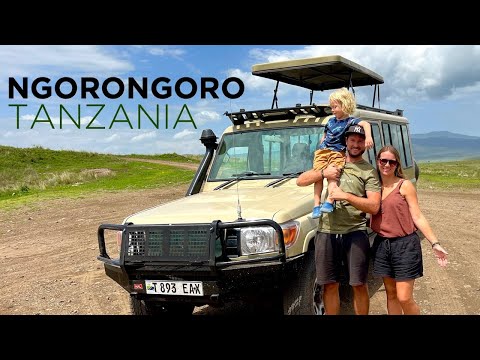
Tanzania, a country known for its vast wilderness areas and spectacular landscapes, is home to one of the world’s most unique and mesmerizing natural wonders: the Ngorongoro Crater. Often hailed as the “#1 Safari Destination” in Tanzania, Ngorongoro offers an unparalleled wildlife viewing experience, combining high-density animal populations with breathtaking scenery. This travel guide delves into what makes Ngorongoro Crater a must-visit destination for any nature and wildlife enthusiast.
### Understanding Ngorongoro Crater
Ngorongoro Crater is a UNESCO World Heritage Site located in the larger Ngorongoro Conservation Area in northern Tanzania. The crater is actually the world’s largest inactive, intact, and unfilled volcanic caldera. It was formed when a large volcano exploded and collapsed on itself two to three million years ago. The crater floor covers about 260 square kilometers (100 square miles) and is encircled by steep walls rising 400 to 610 meters (1,312 to 2,000 feet) high. But it’s not just the geology that’s fascinating; it’s also one of the densest concentrations of wildlife anywhere on Earth.
### Wildlife in Ngorongoro
Ngorongoro Crater is like a natural enclosure for wildlife – making it an ideal spot for game viewing throughout the year. The crater floor has varied ecosystems including grasslands, swamps, forests, and Lake Makat – a shallow alkaline lake at its center – creating diverse habitats supporting over 25,000 large animals.
Visitors are almost guaranteed sightings of Africa’s Big Five (lion, elephant, buffalo, rhinoceros, and leopard), particularly because Ngorongoro hosts one of the highest densities of lions in the world. It’s also an important conservation area for black rhinos which are critically endangered worldwide.
### Witnessing the Great Migration
While not all sections of the Great Migration pass through Ngorongoro directly, its proximity to other key locations like Serengeti National Park makes it an essential part of experiencing this awe-inspiring event. The Great Migration sees over 1.5 million wildebeest as well as hundreds of thousands of zebra and gazelle move cyclically through Tanzania and Kenya searching for fresh grazing lands.
The timing can vary slightly each year based on rainfall patterns but aiming for between December to July could allow you glimpses into parts of their journey – especially during calving season around February when huge numbers congregate on southern Serengeti plains close to Ngorongoro.
### Planning Your Visit
**When to Go:** The best time for wildlife watching at Ngorongoro is during the dry season from June to October when animals gather around water sources making them easier to spot. However visiting during wet seasons will showcase a lush landscape brimming with life after rejuvenating rains.
**Getting There:** The nearest major city with an airport is Arusha which serves as a starting point for most safaris into Ngorongoro Conservation Area. From there visitors typically take either a small plane or travel by road into the area.
**Accommodations:** Options range from luxury lodges perched at the rim offering spectacular views down into the caldera to more affordable campsites closer or within surrounding areas like Karatu town which acts as gateway into conservation area.
**Conservation Efforts:** Tourism plays a crucial role but comes with responsibility too; costs oftentimes include conservation fees that go towards maintaining ecosystem healthiness hence supporting sustainable tourism practices are vital while visiting.
### Conclusion
Ngorongoro Crater provides one of those rare experiences where sheer natural beauty meets abundant wildlife diversity almost seamlessly making it arguably Tanzania’s top safari destination perhaps even Africa’s crown jewel when it comes to wildlife safaris. Whether you’re witnessing dense populations animal down on crater floor or observing part great migration nearby Serengeti your trip here promises nothing short unforgettable encounters with nature at its most raw form.
